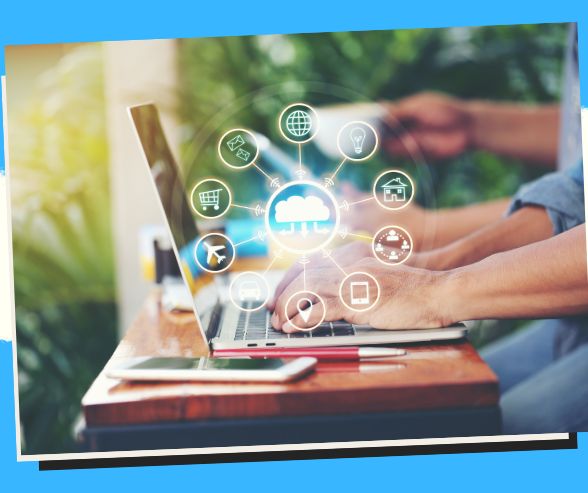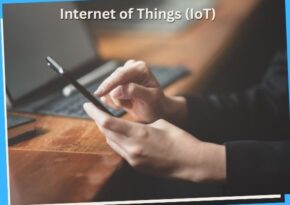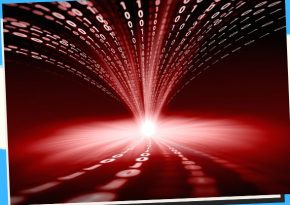
Beyond Limits: Exploring the Impact of Edge Computing in IoT!
Ready to empower your IoT landscape? Dive into the realm of edge computing, where innovation meets the edge to reshape how data is processed, elevating IoT experiences.
Bridging the Digital Divide: Exploring Edge Computing in IoT 🌐💻🚀
In the dynamic realm of technology, where data flows ceaselessly and devices connect seamlessly, a new paradigm is emerging – one that promises to reshape the way we process and leverage data. Enter edge computing, a transformative concept within the Internet of Things (IoT) landscape. This article is your compass to navigate the world of edge computing, unraveling its significance, benefits, challenges, and the role it plays in unlocking the true potential of IoT. 🌐🔍💡
Understanding Edge Computing 🛠️🔗
Picture a bustling metropolis where information flows rapidly through highways and roads. In this analogy, the data highways are the internet, and the city’s core is the cloud. However, as data generation explodes and real-time decision-making becomes critical, the journey from devices to the cloud can sometimes be slow due to latency and bandwidth limitations. This is where edge computing comes into play.
Edge computing involves processing and analyzing data closer to the source – at the “edge” of the network, rather than sending all data to centralized cloud servers. By doing so, edge computing minimizes latency, enhances real-time processing, and reduces the burden on cloud infrastructure.
The Role of Edge Computing in IoT 🌐🔌
In the context of IoT, edge computing acts as a catalyst, transforming the way data is collected, analyzed, and acted upon:
**1. *Reduced Latency:* Edge computing brings data processing closer to the devices generating it. This reduces the time it takes for data to travel to the cloud and back, resulting in faster response times and real-time decision-making.
**2. *Bandwidth Efficiency:* Transmitting vast amounts of data to the cloud can strain network bandwidth. Edge computing filters and processes data locally, sending only relevant insights to the cloud, thereby optimizing bandwidth usage.
**3. *Enhanced Privacy:* For applications involving sensitive data, edge computing keeps critical information within local networks, minimizing the need to send data to external cloud servers, thereby improving privacy and security.
**4. *Offline Capabilities:* Devices equipped with edge computing can continue to operate even when connectivity to the cloud is lost. They can process data locally and synchronize with the cloud when connection is restored.
Benefits of Edge Computing in IoT 🌟🚀🔌
The integration of edge computing into the IoT ecosystem offers a multitude of advantages:
**1. *Real-Time Decision-Making:* With data processed at the edge, decisions can be made in real time. This is crucial for applications like industrial automation, autonomous vehicles, and healthcare monitoring.
**2. *Improved Reliability:* Edge computing enhances reliability by reducing dependency on cloud connectivity. Even in cases of network disruptions, local processing ensures uninterrupted operations.
**3. *Cost Efficiency:* By filtering and processing data locally, edge computing reduces the amount of data transmitted to the cloud, leading to cost savings in terms of network bandwidth and cloud storage.
**4. *Scalability:* Edge computing allows for distributed processing across a network of devices, ensuring scalability without overburdening centralized cloud servers.
**5. *Privacy and Compliance:* For applications handling sensitive or regulated data, edge computing helps organizations adhere to data protection regulations by minimizing data exposure.
Challenges and Considerations 🚧🤔
While edge computing holds immense potential, it comes with its own set of challenges:
**1. *Resource Constraints:* Edge devices, such as sensors and small computing units, might have limited processing power and memory, making it essential to optimize algorithms and resource usage.
**2. *Security:* Distributing processing across various devices can expose vulnerabilities, requiring robust security measures to protect against breaches and unauthorized access.
**3. *Management Complexity:* Managing a decentralized network of edge devices can be complex. Organizations need effective management tools to ensure proper configuration, monitoring, and updates.
**4. *Data Synchronization:* Ensuring accurate and timely synchronization of data between edge devices and the cloud can be challenging, especially in scenarios with intermittent connectivity.
**5. *Compatibility:* Ensuring compatibility between different edge devices and cloud platforms is crucial for seamless integration and interoperability.
Edge Computing in Action 🌐🛠️🏭
Edge computing finds its applications across diverse sectors:
**1. *Industrial IoT (IIoT):* In manufacturing, edge computing enables real-time monitoring of machines and processes, enabling predictive maintenance and reducing downtime.
**2. *Smart Cities:* Edge computing enhances smart city initiatives by processing data from sensors placed throughout urban environments, enabling efficient traffic management, waste management, and energy optimization.
**3. *Healthcare:* In telemedicine, edge computing enables real-time processing of patient data, facilitating remote diagnosis and treatment recommendations.
**4. *Retail:* Edge computing enhances personalized shopping experiences by processing data from in-store sensors and delivering real-time recommendations to shoppers.
**5. *Agriculture:* Edge devices can process data from sensors placed in fields to monitor soil conditions, weather patterns, and crop health, optimizing irrigation and resource utilization.
The Future of Edge Computing in IoT 🌐🚀
As technology continues to evolve, the future of edge computing within IoT holds exciting possibilities:
**1. *AI Integration:* Edge devices will become more intelligent, capable of running AI algorithms locally to derive insights and make decisions at the source of data generation.
**2. *Fog Computing:* Fog computing, an extension of edge computing, involves intermediate nodes between the edge and the cloud, further optimizing data processing and distribution.
**3. *Hybrid Architectures:* Combining edge, fog, and cloud computing will result in hybrid architectures that offer the best of both worlds – real-time processing and cloud-based analytics.
**4. *Standardization:* Industry-wide standardization will emerge, ensuring compatibility and interoperability between various edge devices and platforms.
Embracing the Edge of Possibilities 🌐🔮🛠️
Edge computing, a technological leap within the IoT landscape, holds the promise of transforming industries, enhancing experiences, and revolutionizing the way data is handled. As devices become smarter, and the demand for real-time insights intensifies, edge computing emerges as a bridge between data generation and actionable intelligence. By embracing the edge of possibilities, you’re embarking on a journey that transcends the limitations of traditional cloud-based processing, enabling a world where data-driven decisions are made at the speed of thought. So, gear up for a future where the edge isn’t just a place; it’s a realm of endless innovation. 🌐🚀💡
Related Queries
💡🌐 Empowering IoT’s Edge: Unleash Innovation with Edge Computing!
🔝🌍 Beyond Limits: Impact of Edge Computing in IoT!
🚀🧭 Edge of Possibilities: Edge Computing’s Potential in IoT!
🌟🔁 Revolutionizing IoT: Edge Computing’s Role!
🗺️🔍 Navigating IoT’s Frontline: Edge Computing and Connectivity!
🌄📈 Unveiling the Edge: Edge Computing in IoT Experiences!
📊💫 From Data to Destiny: Edge Computing’s Influence on IoT!
⚙️🔌 Edge-Powered IoT: Unleash Efficiency with Edge Computing!
🌐🚀 Redefining Connectivity: Edge Computing’s Innovation in IoT!
🌐🧭 Edge of Transformation: IoT’s Journey with Edge Computing!
Save/Share this story with QR CODE
Disclaimer
This article is for informational purposes only and does not constitute endorsement of any specific technologies or methodologies and financial advice or endorsement of any specific products or services.
📩 Need to get in touch?
Feel free to Email Us for comments, suggestions, reviews, or anything else.
We appreciate your reading. 😊Simple Ways To Say Thanks & Support Us:
1.) ❤️GIVE A TIP. Send a small donation thru Paypal😊❤️
Your DONATION will be used to fund and maintain NEXTGENDAY.com
Subscribers in the Philippines can make donations to mobile number 0917 906 3081, thru GCash.
3.) 🛒 BUY or SIGN UP to our AFFILIATE PARTNERS.
4.) 👍 Give this news article a THUMBS UP, and Leave a Comment (at Least Five Words).
AFFILIATE PARTNERS

World Class Nutritional Supplements - Buy Highest Quality Products, Purest Most Healthy Ingredients, Direct to your Door! Up to 90% OFF.
Join LiveGood Today - A company created to satisfy the world's most demanding leaders and entrepreneurs, with the best compensation plan today.



 Business Technology, Finance Technology & Information Technology
Business Technology, Finance Technology & Information Technology





